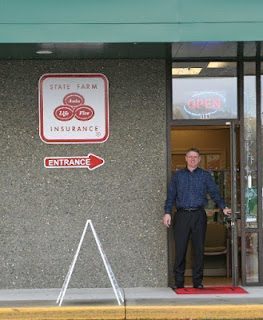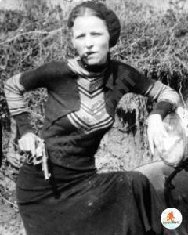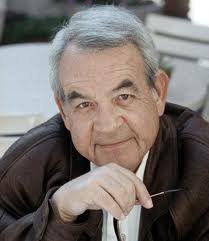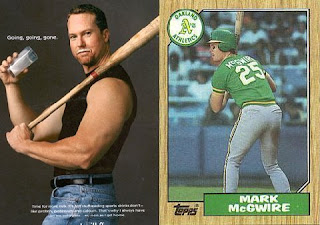Month-long observances:
- In Catholic Church tradition, October is the Month of the Holy Rosary.
- Breast Cancer Awareness Month
- Health Literacy Month
- International Walk to School Month
- Medical Ultrasound Awareness Month
- Rett Syndrome Awareness Month
- World Blindness Awareness Month
- World Menopause Month
- Vegetarian Awareness Month
A pumpkin is a vernacular term for mature winter squash of species and varieties in the genus Cucurbita that has culinary and cultural significance but no agreed upon botanical or scientific meaning. The term pumpkin is sometimes used interchangeably with "squash" or "winter squash".
Native to North America (northeastern Mexico and the southern United States), C. pepo pumpkins are one of the oldest domesticated plants, having been used as early as 7,000 to 5,500 BC. Today, pumpkins of varied species are widely grown for food, as well as for aesthetic and recreational purposes. The pumpkin's thick shell contains edible seeds and pulp. Pumpkin pie, for instance, is a traditional part of Thanksgiving meals in Canada and the United States, and pumpkins are frequently carved as jack-o'-lanterns for decoration around Halloween, although commercially canned pumpkin purée and pumpkin pie fillings are usually made of different pumpkin varieties from those used for jack-o'-lanterns.
According to the Oxford English Dictionary, the English word pumpkin derives from the Ancient Greek word πέπων (romanized pepōn), meaning 'melon'. Under this theory, the term transitioned through the Latin word peponem and the Middle French word pompon to the Early Modern English pompion, which was changed to pumpkin by 17th-century English colonists, shortly after encountering pumpkins upon their arrival in what is now the northeastern United States.
Description
Pumpkin fruits are a type of botanical berry known as a pepo. Characteristics commonly used to define "pumpkin" include smooth and slightly ribbed skin, and deep yellow to orange color.[14] White, green, and other pumpkin colors also exist.
While C. pepo pumpkins generally weigh between 6 and 18 lb, Giant pumpkins can exceed a tonne in mass. Most are varieties of Cucurbita maxima, and were developed through the efforts of botanical societies and enthusiast farmers. The largest cultivars of the species Curcubita maxima frequently reach weights of over 75 lb, with current record weights of over 2,703 lbs.
As one of the most popular crops in the United States, in 2017 over 1.5 billion pounds of pumpkins were produced. The top pumpkin-producing states include Illinois, Indiana, Ohio, Pennsylvania, and California. Pumpkin is the state squash of Texas.
According to the Illinois Department of Agriculture, 95% of the U.S. crop intended for processing is grown in Illinois. 41% of the overall pumpkin crop for all uses originates in the state, more than five times the nearest competitor (California, whose pumpkin industry is centered in the San Joaquin Valley), and the majority of that comes from five counties in the central part of the state. Nestlé, operating under the brand name Libby's, produces 85% of the processed pumpkin in the United States at their plant in Morton, Illinois.
In the fall of 2009, rain in Illinois devastated the Libby's pumpkin crop, which, combined with a relatively weak 2008 crop depleting that year's reserves, resulted in a shortage affecting the entire country during the Thanksgiving holiday season. Another shortage, somewhat less severe, affected the 2015 crop.
The pumpkin crop grown in the western United States, which constitutes approximately 3–4% of the national crop, is primarily for the organic market. Terry County, Texas, has a substantial pumpkin industry, centered largely on miniature pumpkins. Illinois farmer Sarah Frey is called "the Pumpkin Queen of America" and sells around five million pumpkins annually, predominantly for use as lanterns.
In North America, pumpkins are part of the traditional autumn harvest, eaten mashed and making its way into soups and purées. Often, pumpkin flesh is made into pie, various kinds of which are a traditional staple of the Canadian and American Thanksgiving holidays. Pumpkin purée is sometimes prepared and frozen for later use.
Halloween
In the United States, the carved pumpkin was first associated with the harvest season in general, long before it became an emblem of Halloween. The practice of carving produce for Halloween originated from an Irish myth about a man named "Stingy Jack". The practice of carving pumpkin jack-o'-lanterns for the Halloween season developed from a traditional practice in Ireland as well as Scotland and other parts of the United Kingdom of carving lanterns from the turnip, mangelwurzel, or swede (rutabaga). These vegetables continue to be popular choices today as carved lanterns in Scotland and Northern Ireland, although the British purchased a million pumpkins for Halloween in 2004 reflecting the spread of pumpkin carving in the United Kingdom.
Immigrants to North America began using the native pumpkins for carving, which are both readily available and much larger – making them easier to carve than turnips. Not until 1837 does jack-o'-lantern appear as a term for a carved vegetable lantern, and the carved pumpkin lantern association with Halloween is recorded in 1866.
In 1900, an article on Thanksgiving entertaining recommended a lit jack-o'-lantern as part of the festivities that encourage kids and families to join together to make their own jack-o'-lanterns.
The traditional American pumpkin used for jack-o-lanterns is the Connecticut field variety. Kentucky field pumpkin is also among the pumpkin cultivars grown specifically for jack-o-lantern carving.
If, as they say, "imitation is the highest form of flattery," then this comforting recipe for Creamy Crab Casserole will win you genuine raves! Enjoy the best tastes of the sea in every bite!
- 1 (10-3/4-ounce) can condensed cream of mushroom soup
- 1 cup sour cream
- 1 pound frozen imitation crabmeat, thawed if frozen, coarsely chopped
- 1 (10-ounce) package frozen asparagus spears, thawed, drained, and chopped
- 1/4 teaspoon black pepper
- 2 cups crushed cheese-flavored crackers
- 1/3 cup butter, melted
- Preheat oven to 400º. Coat an 8-inch square baking dish with cooking spray.
- In a large bowl, combine soup, sour cream, crabmeat, asparagus, and pepper; mix well. Pour into prepared baking dish.
- In a small bowl, combine cracker crumbs and butter; mix well and sprinkle over crabmeat mixture.
- Bake 15 to 20 minutes, or until heated through. Serve immediately.
1910 – Bonnie Parker, American outlaw (d. 1934)
1920 – Walter Matthau, American actor (d. 2000)
1927 – Tom Bosley, American actor (d. 2010)
1928 – George Peppard, American actor (d. 1994)
1935 – Julie Andrews, British actress and singer
1936 – Stella Stevens, American actress (d.2023)
1945 – Spider Sabich, American skier (d. 1976)





























No comments:
Post a Comment